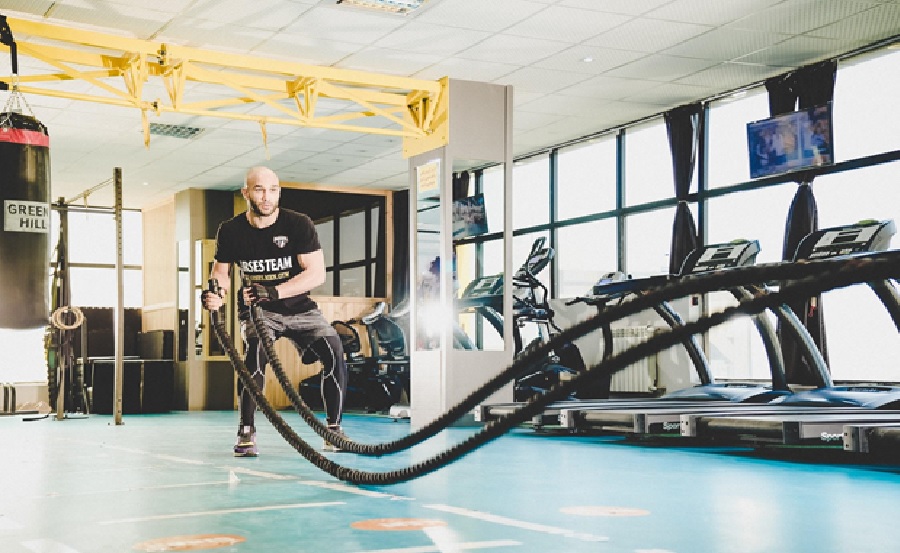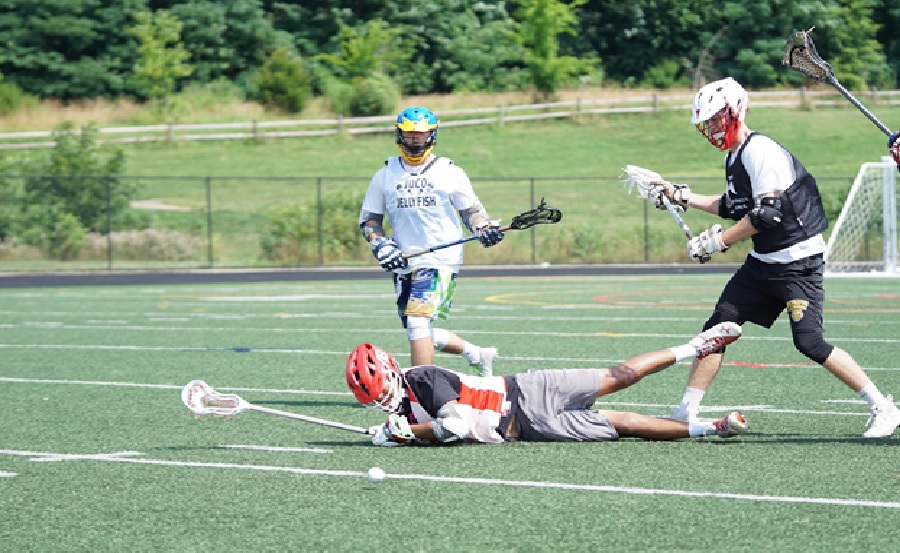Sports Medicine 101: What is it and why it may truly benefit your life

and incorporates rehabilitation,nutrition, and performance training in order to help patients recover and train properly.A team of sports medicine healthcare specialists includes licensed sports medicine therapists, orthopedic surgeons, physical therapists, nutritionists, and trainers, with targeted training in preventing injury in active individuals, from athletes to everyday children, teens and adults that maintain an active lifestyle.
The importance of sports medicine for all

Although sports medicine is a relatively new healthcare specialty, becoming a distinct profession in the late 20th century, it is now more vital than ever, with 8.6 million sport and recreational related injuries of all ages reported between the years 2011-2016, according to a published report by the Center of Disease Control (CDC). 1 Sports Medicine professionals work to create a tailored program for each patient, targeting their specific needs and covering a wide range of health concerns to effectively help them master their sports training. Sports Medicine is beneficial for not only athletes, but also among the general population, with the national average for regular exercise being 51.6% according to a report by the U.S. Department of Health and Human Services (HHS). 2
Benefits of Sports Medicine
- Exclusive Care: As previously discussed, sports medicine specialists are specifically trained to care for athletes, and are experts on the effects of strenuous activity on the body, offering a high quality of care, and with the addition of orthopedic surgeons and trainers, a broad range of treatment options as well.
- Innovative Treatment Options: The field of sports medicine is constantly evolving, and with a team of specialists that stay up-to-date with sports medicine-related research, combined with a variety of healthcare specialists, patients can receive the latest innovative treatments options. Sports medicine orthopedic surgeons are able to perform leading reconstructive surgical techniques, and sports medicine treatments can help restore injured areas to promote advanced healing.
- Preventative care and Maintenance: Sports Medicine is not only for those with injuries but is also a beneficial way to enhance weak areas in patients to prevent any injuries from occurring. Trained specialists provide valuable information and advice specific to each patient to prevent injuries and avoid re-injury.
- Enhanced Performance: Athletes are constantly striving to improve their form, athletic ability, and mobility, making sports medicine a great way to improve their game. With healthcare specialists that create custom programs around their patient’s strength, weakness, and overall abilities, quality sports medicine professionals can truly make a difference in one’s athletic journey.
Types of Injuries

When it comes to sports medicine, there are two types of injuries: acute and chronic.
- Symptoms of acute sports injuries include sudden and severe pain while training/exercising, such as a sprained ankle from a bad jump landing. The pain from acute injuries may often be overpowered by feelings of adrenaline and cortisol at first. Other symptoms of acute injury include swelling, redness, dislocated shoulder, muscle sprains and strains, fractures, inability to hold weight on any arm/foot, extreme weakness in leg or arm, and lack of mobility.
- Repetitive movements and strains that are prolonged over time result in chronic sports injuries and are particularly common in endurance sports such as swimming and running. Achilles tendon injuries, runners’ knee, and stress fractures are among common chronic injuries. Symptoms of chronic injuries include prolonged pain when active, swelling/tenderness around injury, and pain during rest.
Sports Injury Prevention
Prevention of injuries is an important aspect of what makes sports medicine so valuable, as it offers patients the proper knowledge on forms, techniques, equipment, and nutrition while endeavoring their chosen activity.
It’s important for athletes to practice proper warm-up and cool down methods. Sports medicine practitioners ease athletes into their sport timely and effectively, tracking their progress to guide them safely and allowing them to excel without the setback of injuries that so often occur to athletes and fitness enthusiasts.
Sports Injury Treatment
When a sports related injury occurs, the PRICE method is often used as treatment for less severe injuries such as sprains. The price algorithm is:
P- Protection: When injury occurs, the first step is to apply protection such as a bandage or split to prevent any further injury from occurring.
R- Rest: Rest is vital for regeneration. Taking proper rest is important and the amount of rest needed varies based on the severity of injury. Sports medicine professionals provide strategic plans to slowly accommodate the body to enhance strength and movement.
I- Ice: Icing and injury up to 72 hours after it occurs helps reduce swelling and pain.
C- Compression: Applying compression to injuries also helps reduce swelling.
E- Elevation: Elevation is crucial in reducing swelling and pain as well by allowing gravity to drain fluids from injured areas.
Regenerative medicine, such as stem cell therapy and platelet-rich plasma (PRP) therapy, is another option for treating sport related injuries. Regenerative medicine utilizes the body’s tissues to promote self-healing. Stem cell therapy involves using stem cells from the patient’s bone marrow to promote the regeneration of tissue in the injured area. PRP therapy in particular involves isolating and concentrating platelets from the patient’s blood and injecting it into the injured area to promote healing.
Physical Therapy is useful for injuries that affect the patient’s mobility, and helps rehabilitate strength, flexibility and function. Physical therapy treatment includes exercises, such as core and muscle strengthening exercises, heat treatments, massage, balance training, and more.
Surgery is necessary in treating severe injuries that do not respond to other forms of treatments. An experienced orthopedic surgeon is vital when undergoing invasive surgery. Invasive surgeries involve making minimal incisions to reduce blood loss, minimize scarring, and provide shorter recovery time. Surgery can help correct a wide range of injuries such as elbow, wrist, hand, knee, foot and ankle injuries, spine disorders, joint damage, trauma, and more.

In the Case of Injury, Seek Proper Medical Attention Timely
In the era of orthopedic and arthroscopic surgery, also known simply as arthroscopy, is a minimally invasive orthopedic procedure used to diagnose and treat joint problems. Orthopedic procedure has become one of the most popular procedures, It involves the use of a narrow scope, called an arthroscope, and specialized surgical tools to access a joint through tiny “keyhole” incisions. In this article, Dr. William L. King, a successful Orthopedic and Clinical Instructor of Orthopedic Surgery Hospital for Joint Diseases of New York also known as NYU Langone Orthopedic Hospital, explores how using Arthroscopic Surgery can be a right option.
It is crucial to seek proper medical attention timely, before injury worsens. The staff at NYC Orthopedic Group will work to help you get back to a pain-free lifestyle as soon as possible after sustaining an injury. Dr. William L. King is an orthopedic surgeon who specializes in sports medicine, arthroscopy, hand reconstruction and treatment of injuries towards the leg, knee, ankle, shoulder, arm, hand, and wrist as well as lack of joint mobility due to degenerative diseases.
Reach out to NYC Orthopedic Group offices of Dr. William L. King today to discuss arthroscopic diagnosis and treatment options.
Manhattan – Bronx – Queens – Brooklyn – Nassau
Phone: (929) 999-1071
Email: King@NYCOrthopedicGroup.com
Sources
You don't have to live with your pain... Let us help you relieve your pain and improve the quality of your life. Request Appointment today!



 NYC Orthopedic Group
NYC Orthopedic Group